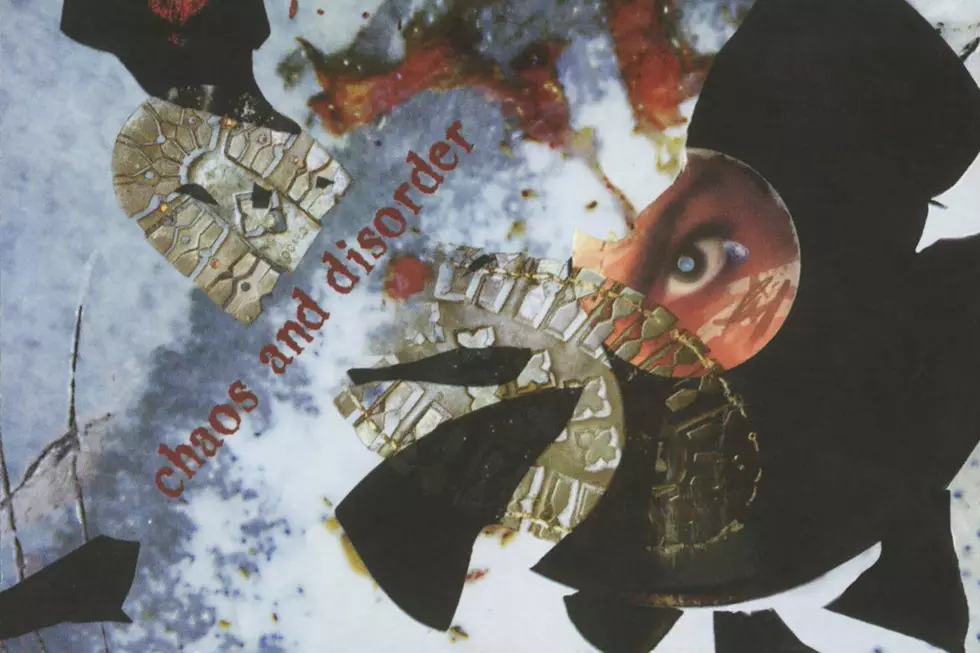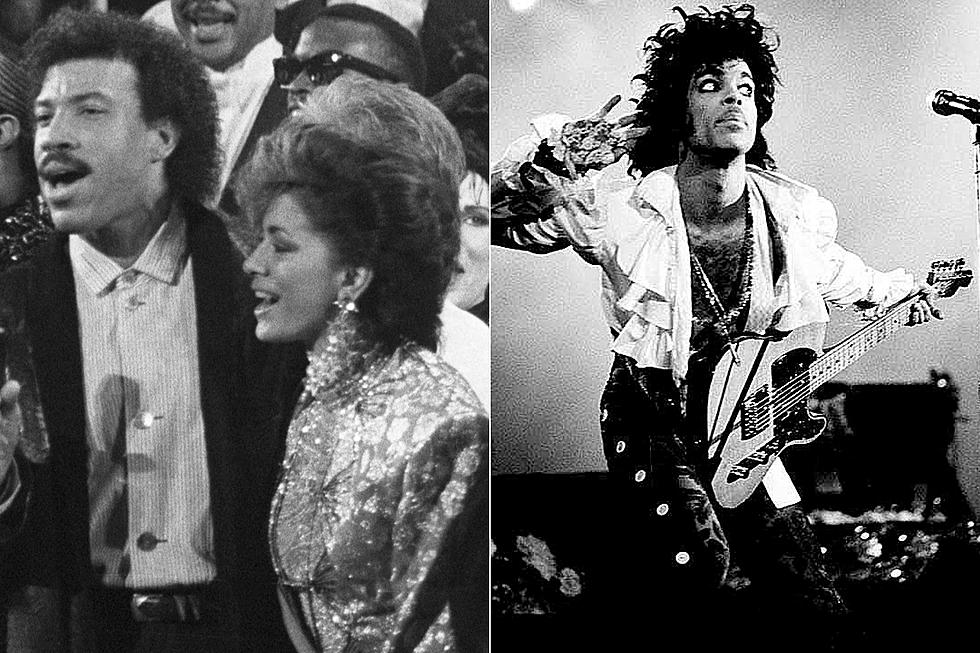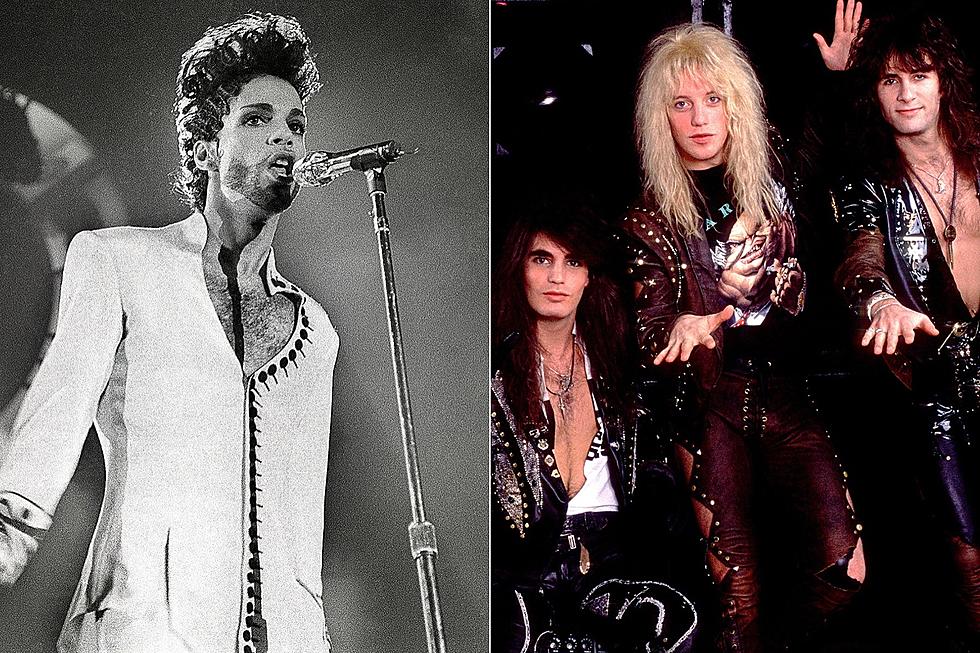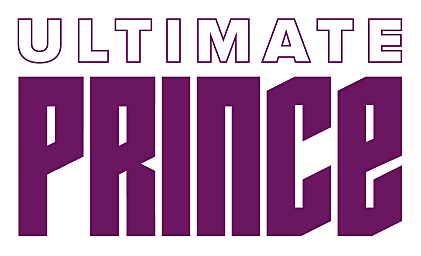
Why Prince’s ‘Chaos and Disorder’ Isn’t the Throwaway He Made It out to Be
Prince's Chaos and Disorder emerged from a period that was defined, in fact, by chaos and disorder. The songs reflected it, the packaging reflected it, even his thoughts about the project reflected it.
He called it blatant contract filler, but also the product of a rush of creativity. He said he was at peace with Warner Bros., having provided a final set of new songs, yet steadfastly refused to tour behind it.
And this was after a turbulent period in which Prince changed his name to an unpronounceable symbol, continually excoriated his long-time label, dumped his band and appeared in public with the word "slave" written on his cheek. Most of all, he seemed to chafe at anything standing in the way of his sweeping, seeming ceaseless creativity.
"I am energized by music: Music is my reason for existence, writing it, playing it listening to it," he told the London Times just before Chaos and Disorder was released on July 9, 1996. Yet, "I'm not free to write or record with whom I want. If I wanted to write and record a song with you I could not do it."
Those restrictions, it seemed, were behind him now. Just days after its arrival, senior vice president Bob Merlis confirmed to the Los Angeles Times that Chaos and Disorder would be Prince's last album of new material for Warner Bros. "I think it's safe to say that he's in a position now to make a new deal with another record company," Merlis said. "We've come to a point where we feel that if he's happier somewhere else, we don't have any beef with him."
Prince was finally, blessedly free. "I was bitter before, but now I've washed my face," he told the Los Angeles Times in his only extended U.S. interview promoting Chaos and Disorder. "I can just move on. I'm free."
Listen to Prince Perform 'I Rock, Therefore I Am'
The music, often gnarled and guitar-fueled, certainly made his first point – and his immediate plan was, indeed, to move on: He did not follow Chaos and Disorder with a tour, limiting his appearances to stops on TV's Late Show with David Letterman and The Today Show. The album's artwork completed the theme, portraying a life – and a career – torn apart by conflict.
In its own way, that packaging was as revealing as the music contained inside. He included images of a shattered Prince album, cash pulled into a syringe and – most shockingly – a heart lodged inside a toilet. They're all presented in this flat, PC-printed way, a jarring departure from the rich colors of 1995's critically acclaimed Gold Experience.
At first, Prince positioned Chaos and Disorder as a throwaway farewell item: The liner notes state that these songs were "originally intended 4 private use only," and that "this compilation serves as his last original material recorded 4 Warner Brothers Records." The era that introduced this flinty talent, then defined his legend, looked set to end with a whimper. Prince, eyes trained on an independent triple-album follow up, apparently couldn't have cared less.
"When I changed my name and wrote 'slave' on my cheek, it was because I felt like a prisoner trapped in a system," Prince told Hello magazine later in 1996. "People thought I was crazy, but I didn't make the decision lightly: I did it out of pure conviction. I could not open up and do what I wanted to do in the way I wanted."
But something interesting happened on the way to his next phase: Prince put out the best throwaway album of his late Warner Bros. career – more focused than 1994's Come, and far more complete than 1999's The Vault: Old Friends 4 Sale, which was compiled at the same time. Credit a sharp eye for just-right archival items, and a tough set of new songs to round things out.
Watch Prince's Video for 'Dinner With Delores'
By the time Chaos and Disorder hit store shelves, Prince was talking about it as if he'd been goosed along by a new adrenaline shot of inspiration. "Someone told me that Van Halen did their first record in a week," Prince told the Los Angeles Times. "That's what we were going for – spontaneity, seeing how fast and hard we could thrash it out. It was done very quickly, and we achieved what we wanted to achieve in that period of time."
That's not exactly the way it happened. Some 40 percent of the album actually dates back to sessions for The Gold Experience and Come. Very much a band-oriented release, Chaos and Disorder marked the return of Rosie Gaines, who sang on five songs. Eight songs also featured Michael B. and Sonny T., in their last sessions as regular New Power Generation members. Only "Had U," the album's final track, was a solo work.
Prince completed the project with material recorded, as he indicated, in a flurry between February and April 1996. Along the way, he found the perfect complementary sounds. Prince may have (initially) wanted everyone to believe he was just playing out the string, but his ear for a uniformity of feel remained, and the recording – while still imperfect – held together surprisingly well.
Turns out, Prince was incapable of making a completely uninteresting album, whether he was actually tossing it off or not. Essentially a final divorce decree from Warner Bros., Chaos and Disorder had a similar sense of mixed, but very pitched emotions. He often rocks very, very hard. Even the delightfully lithe British single "Dinner with Delores" seems to have an undercurrent of aggression toward his label.
Unfortunately, Prince's commercial slide continued. Chaos and Disorder failed to reach Billboard's R&B chart, and stalled out at just No. 26 on the Top 200 – Prince's worst finish for an album of new material since his 1978 debut. Even so, Prince could move on now. And, with Chaos and Disorder in the rearview, he said he did so without any ill will toward Warner Bros.
"It was one experience – and it was my experience. I wouldn't be as clear as I am today without it," he told Rolling Stone in 1996. "I don't believe in darkness. Every thing was there for me to get to this place. I've evolved to something – and I needed to go through everything I went through. And that's why I love the folks at Warner Bros. now,” Prince added with a laugh. "You know that Budweiser ad – 'I love you, man'? I just want to go there with them!"
Prince Year by Year: 1977-2016 Photographs
More From Ultimate Prince









